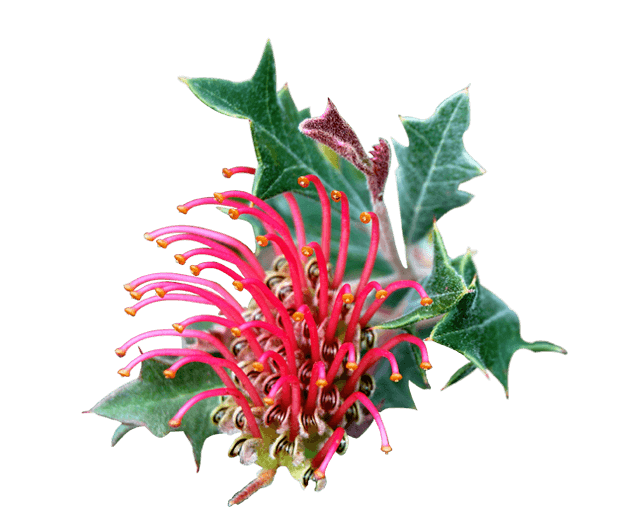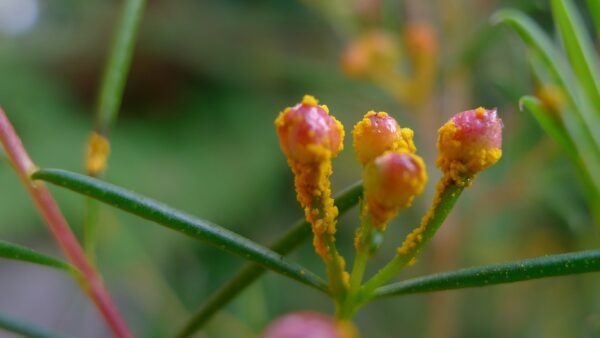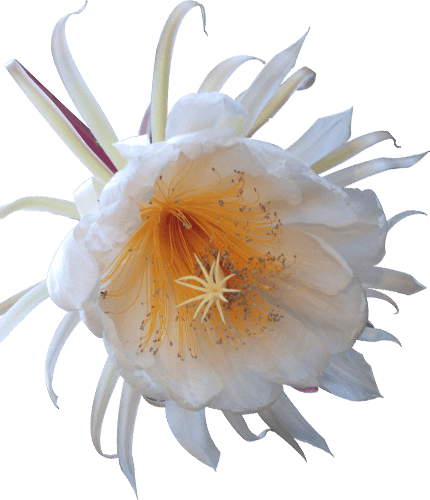
25 Jan 2024
Myrtle Rust Survey 2023 results released

Myrtle rust on the new flower buds of a cultivated Geraldton Wax Chamelaucium uncinatum. Credit John Tann, CC BY 2.0 Flickr31031835@N08/8595049832
Results from the CHABG/BGANZ Myrtle Rust Survey
Numerous iconic Australian plant species in the Myrtaceae family, including the eucalypt, bottlebrush, lilly pilly, paperbarks and tea trees, are under threat from an invasive fungal pathogen, Myrtle rust (Austropuccinia psidii). Introduced to Australia in 2010, Myrtle rust has spread rapidly, and significantly impacts the ability of these plants to survive and reproduce. At least 15 rainforest tree species are at risk of extinction in the wild due to Myrtle rust infection.
Ex situ (off site) collections of plant species in the form of whole plants, seeds, or other germplasm are held in botanic gardens, arboreta, herbaria and seed banks.
These collections are insurance populations, and provide some level of hope for maintaining a species existence, particularly when wild populations are unable to reproduce due to the impacts of threats such as Myrtle rust. The Threatened Species Action Plan 2022-2032 includes a target that all nationally listed threatened plant species affected by Myrtle rust are secured in insurance collections and populations (such as seed banks or botanic gardens).
In response to the persistent threat of this disease, Botanic Gardens Australia and New Zealand Ltd (BGANZ) and the Council of Heads of Australian Botanic Gardens (CHABG) conducted a survey in 2022 to determine the status of ex situ Myrtaceae collections.
Supported by the Australian Government’s Department of Climate Change, Energy, the Environment and Water, this survey provides insights into the ongoing conservation efforts for Myrtaceae species by botanic gardens and others, and the gaps that need addressing.
The survey garnered responses from 26 organisations across Australia, including every state and territory, as well as institutions in New Zealand and the United Kingdom with Australian Myrtaceae accessions.
Key findings of the survey included:
• 73% of organisations actively monitor for Myrtle rust
• 46% of organisations have reported previous observations of the disease
• 42% of organisations are part of the International Plant Sentinel Network
• 38% of organisations are funded to add additional species to their collections
• 62% of accepted Myrtaceae species in the Australian Plant Census are secured in ex situ collections, with 1,173 accepted species yet to be secured
• 87% of Myrtaceae species listed under the EPBC Act are secured, with 23 listed species yet to be secured
• 92% of priority species in the Myrtle Rust National Action Plan are secured.
The four priority Myrtaceae species listed in the Threatened Species Action Plan are secured, but half of these have 10 or less accessions.
Despite commendable efforts so far, the survey highlights that a significant proportion of Myrtaceae species remain unsecured.
This is contrasted by the result that only 38% of respondents have funding for future collection work, emphasising the urgent need for additional resources for ex situ plant conservation.
This survey serves as a vital baseline for strategic planning, management, and future research, and will inform policymaking and resource prioritisation for future mitigation efforts.
If you would like to further support the conservation of Australian’s Myrtaceae species, please contact the ceo@bganz.org.au to partner with us or to make a donation.
The full report is available here and the data here.
CHABG and BGANZ express gratitude to the Australian Government, the National Myrtle Rust Working Group, respondent institutions and individuals who contributed to this crucial survey.

